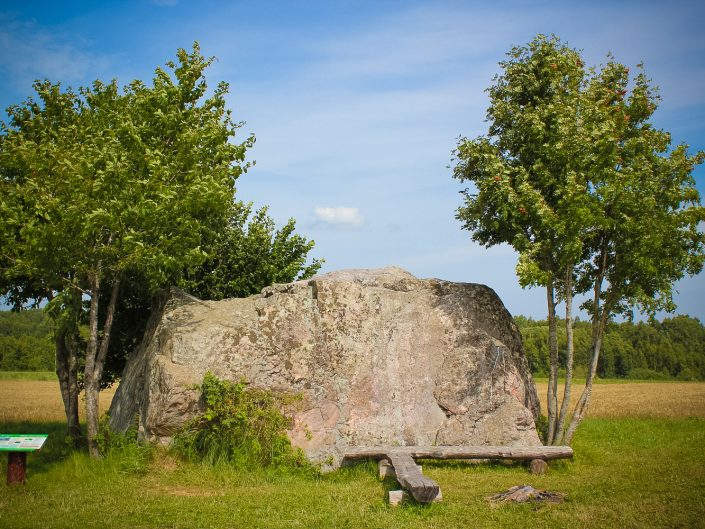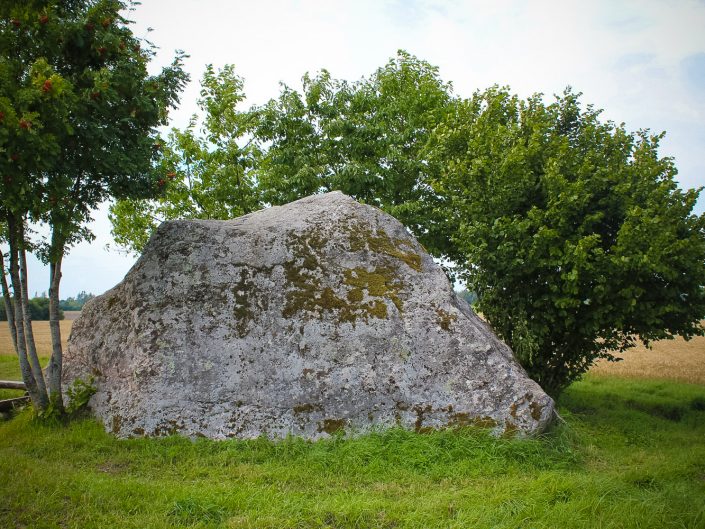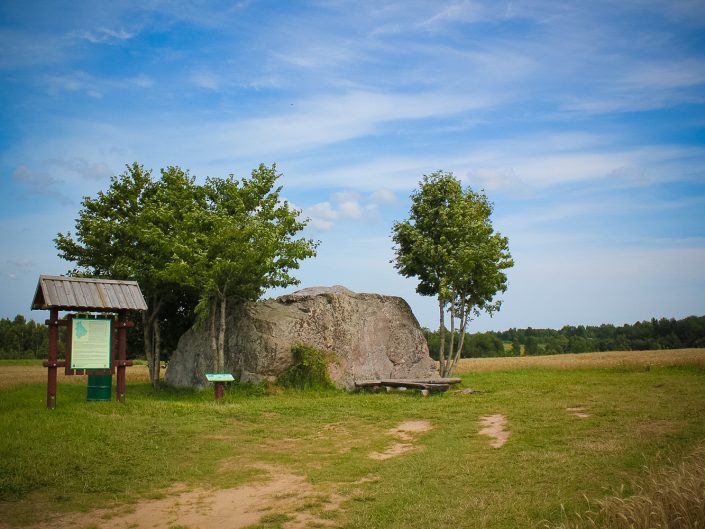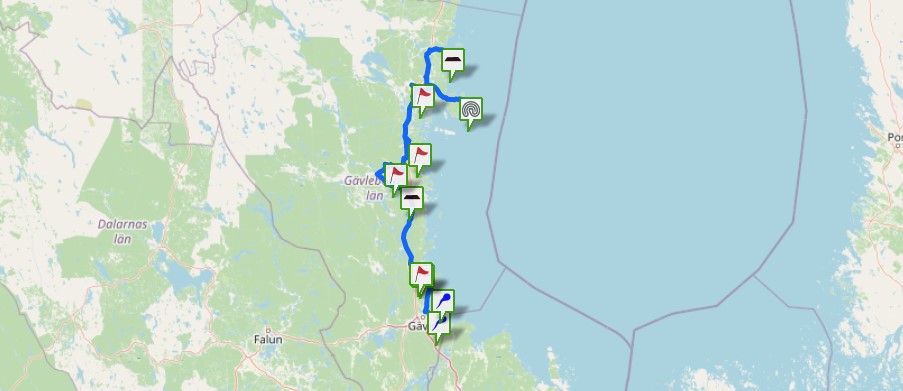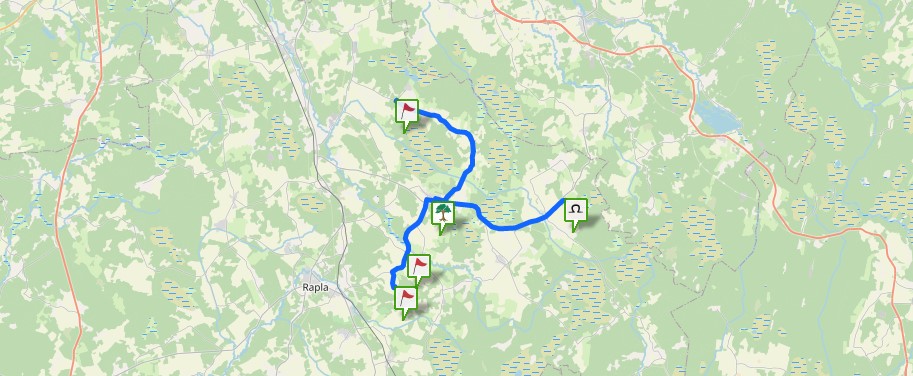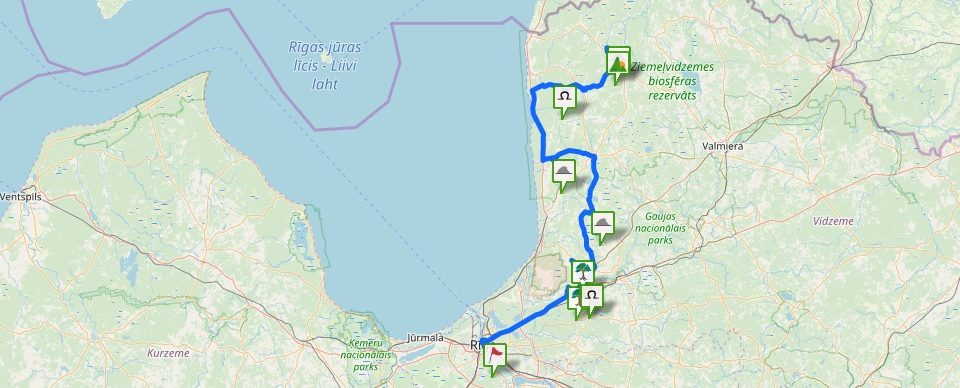The fourth largest stone in Latvia and the greatest one in Kurzeme. The size of the stone: length of 7.0 m, width of 6.9 m, height of 3.4 m, circumference of 26 m, volume of 80 cubic meters. The stone had been demolished in former times by splitting pieces off its sides and the surface that is why its form is irregular, angular, with steep sides. In its SW and W part rosy plagioclase microline granite reveals, in its ZW part – off-white pegmatite granite, in its SE part — grey granite. It is interesting as the largest great stone of the region which is easily accessible and suitable for a wider scope of tourists.
There is a theoretical assumption that there used to be an ancient cult site. In former times close to the stone a large linden grew, but by its side, when ploughing, coal was found – remains of probable ancient bonfires. According to other data, around the stone, yet in the 19th century holy lindens grew, whereas the last one was chopped down around the year of 1930. The tale narrates that in the nearby surroundings there used to be the Tilgaļi homestead and the Tilgaļi Church which during the plague time perished. In the book published in 1937 „Seni stāsti par manu māju” (“Ancient Tales about My Home”) the writer imaginatively narrates about his native home, the Kalēji homestead of Silene, in former times, tells about the sightseeing places of the nearby surrounding and also describes this great stone, “Not far from the cemetery in an open field a huge linden rustles reminding of the times when for many centuries the magnificent linden tree growth blossomed out in spring there, bloomed in summer and dropped all their leaves again in autumn. Then the great stone, which is the largest one in all Kurzeme, did not lie in the open field, being visible from all sides already at a distance, but was situated in the very heart of the linden tree growth, where my ancestors held it for the God as sacrifice. And apart from the linden in that growth there were also many apple-trees… Then the German rule set in establishing the Christian religion in our land by means of a sword and fire, it fought by all ways and means against the lasting and secret idol worshipping … Sad destiny witnessed the great lindens of the God’s garden chopped down by the axes of strange German men, taken in kurshi’s sledges to the seaside, loaded into ships and shipped away to far away towns for making different gambling cubes, also confirmed or non-confirmed pictures’ frames. And on the site of the God’s garden only the great Laima’s Stone (Laimas akmens) remained, to which the strange crusaders could do no harm due to its size, and all around the stone there are only stubs overgrown with slender offsprings.” This is the only case when the name of Laima’s Stone has been attributed to the stone, no other describer neither prior nor after did mention this name. In Kurzeme no other stone with such a name is known either. Also the exhibition material of the Talsi County Museum provide evidence of the Vandzene Great Stone (a name of the stone frequently used in the Soviet Times) as a probable ancient cult site. “Once not far from the stone a large linden grew (broke down in the storm of 1969). The stone and the linden, according to local people’s tales, is an ancient sacrificial site. The sacrificial bonfires were burnt by the linden, but not on the stone itself (not to ruin it).
” Taiga Lasmane (a daughter of Vilis Veldre) reminisces that the Monument Board in 1930s carved into the stone a Latvian star. The star had been carved into the side of the stone against the road; it used to be 10 cm in diameter. The main value of the Vandzene (Tilgaļi) Great Stone is that of an excellent natural object, but the cultural-historical significance – only probable and for the time being unproved.
